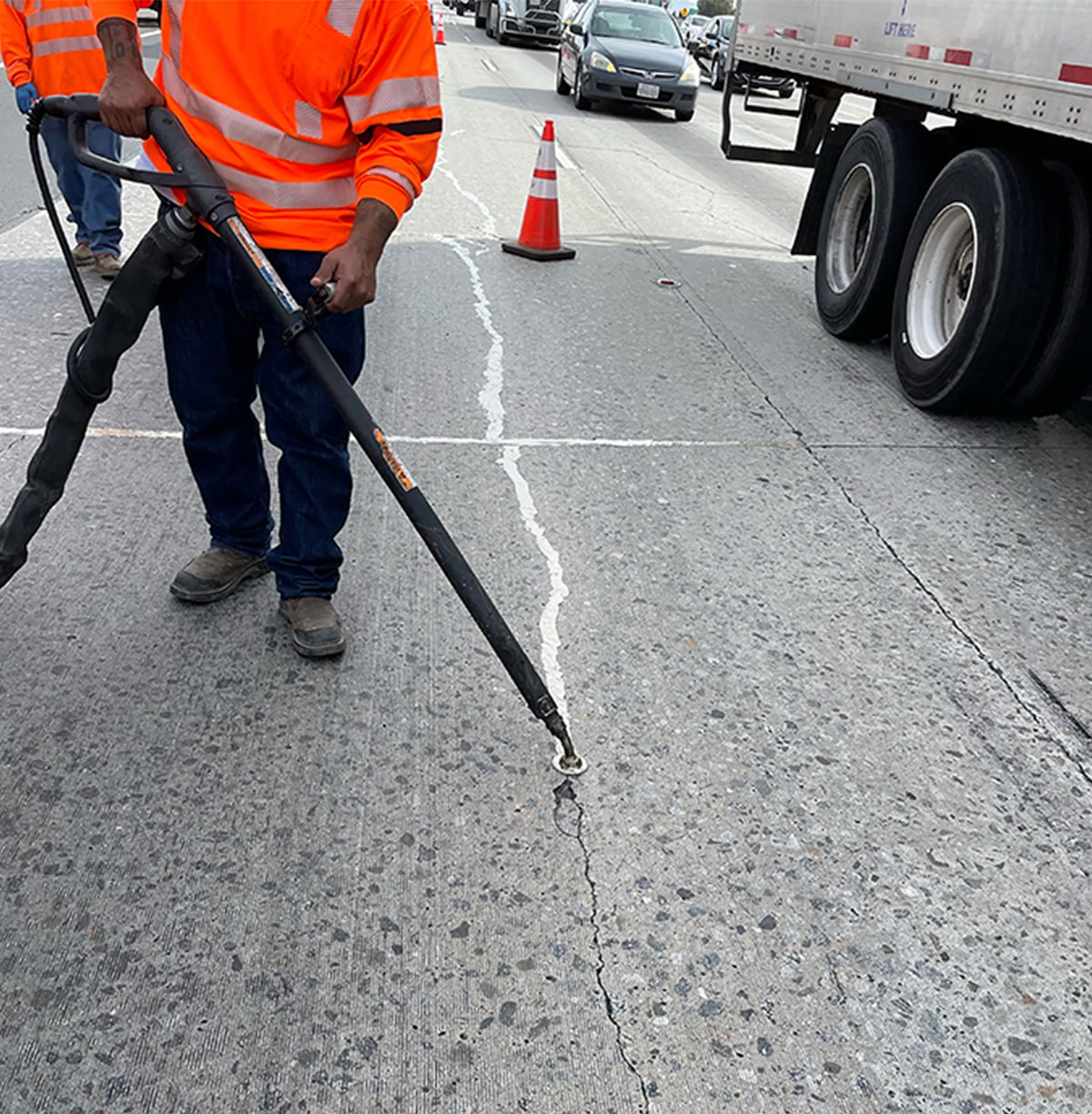Composite Sealants
Seal it. Save it. Conceal it.
Our Composite Sealant Products
We offer three different composite sealants; Pavement CamoSeal, Concrete CamoSeal, and Enflex. Pavement and Concrete CamoSeal are color matched to blend into the road. EnFlex is our cost-effective composite sealant ideal for use below pavement preservation treatments. In the works is a resin-based sealant without color treatment, with incredible rheological properties.
Learn more about the difference between the three below:
Concrete Camoseal™
Concrete CamoSeal
Crack and joint composite sealant that blends into concrete surfaces, made from 50% sustainable materials.
Pavement CamoSeal™
Pavement CamoSeal
Composite crack sealant that blends into asphalt surfaces. On Caltrans' Authorized Material List.
Enflex
EnFlex
EnFlex is our cost-effective composite sealant ideal for use below pavement preservation treatments.
Composite Crack Sealing Benefits:
5 minute traffic release
Extended Lifespan of Road
Long term waterproofing
Performs in extreme temperatures
Stronger and lighter—you can use less and go further, no overbanding needed
Pavement CamoSeal and Concrete CamoSeal are UV resistant composite sealants that blend into the road, combining performance and aesthetics.
The CamoSeal advantage:
- Reduce complaints about road appearance after crack sealing
- Minimize lane drift with sealant that blends into the road
- No need for secondary treatment (slurry, chip seal, etc) to preserve road aesthetics after crack sealing


What sets composite sealants apart?
Composite sealants are engineered for high cohesive strength. This includes tensile strength, bond strength, and lifespan.
Composite sealants are formulated without fillers, so they transition between low and high temperatures with no separation of individual components.
Composites work with, not against, your next treatment:
- No curing and/or aging needed for overlay or seal
- No overlay swelling
- Extremely resistant to bleed through
- Resists reflective cracking of overlays
COHESIVE STRENGTH = TENSILE STRENGTH + BOND STRENGTH + LIFESPAN
Tensile Strength
Composite sealants are made to expand and contract within a working crack at extreme temperatures without compromising its waterproof seal.
We use the ductility (elongation) test at a low temperature of 4°C to show composite’s exceptional tensile strength and flexibility.
The photos below are of a composite sealant in the 4°C ductility bath, stretching from 4cm to 56cm before breaking with a loud snap. Instead of pulling apart like Play-Doh, our composite sealant snaps like a rubber band, indicating that there’s high tensile strength in the material when it fails.
After snapping, the composite sealant recovers to 7cm in 30 minutes at 4°C after extending to 56cm. This represents 88% recovery.

Bond Strength
Composites are so strong, they broke the test!
Bond strength testing shows the ability of composite sealants to adhere to concrete or asphalt while under pressure.
In this test, Concrete CamoSeal is applied between two blocks of concrete (top and bottom) that are slowly pulled apart. The photo on the left shows the concrete block on the bottom breaking before the sealant debonds from the concrete or separates under tension.

Lifespan
Composite sealants are built to last, reducing the need to revisit roads after crack sealing.
Accelerated Aging in a Xenon Arc Weatherometer demonstrates the ability of Pavement CamoSeal to withstand temperature and UV extremes while retaining tensile properties and overall flexibility.
Mandrel bend testing at 0°C following aging shows Pavement CamoSeal failing in a ductile mode (still able to bend) after 1000 hrs.
Instead of becoming brittle after aging, composites stay flexible.

